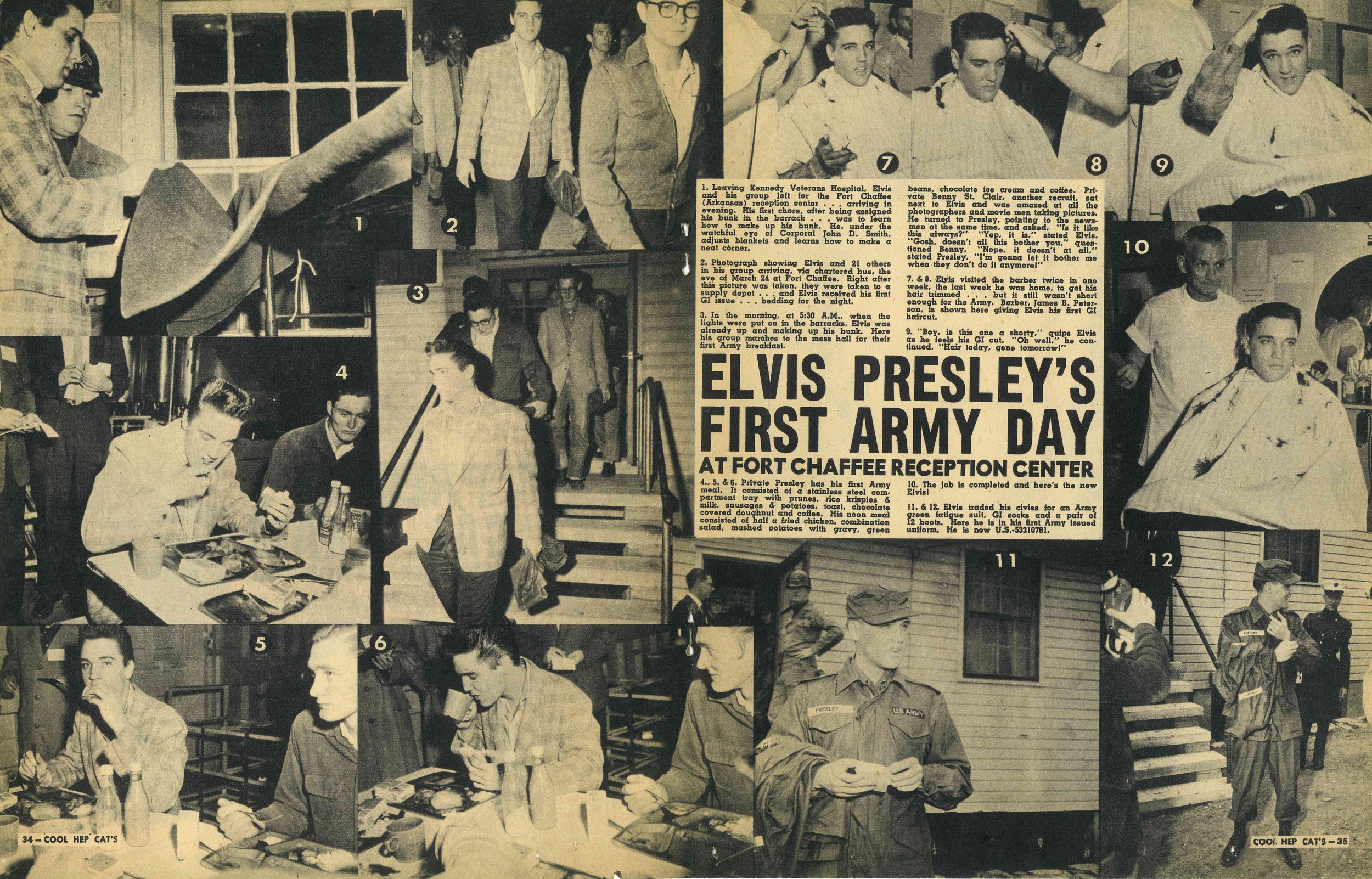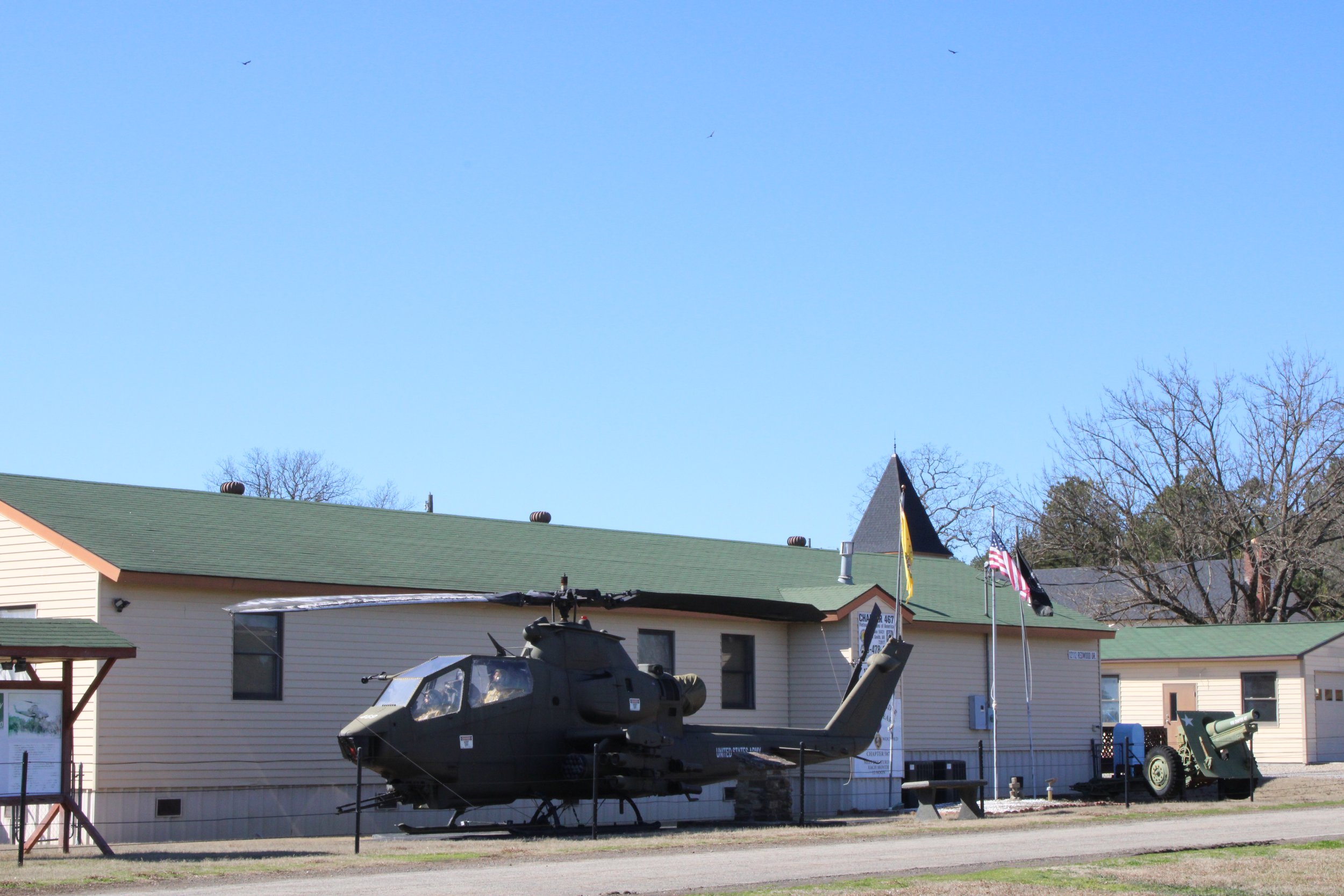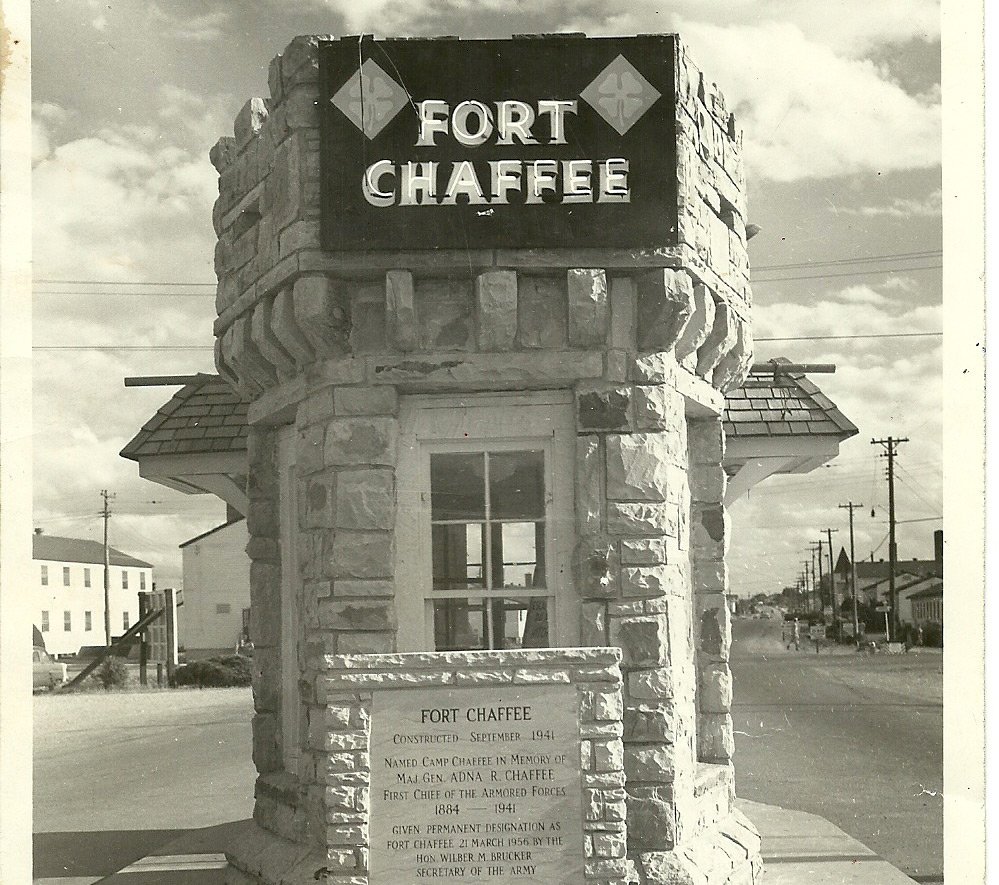
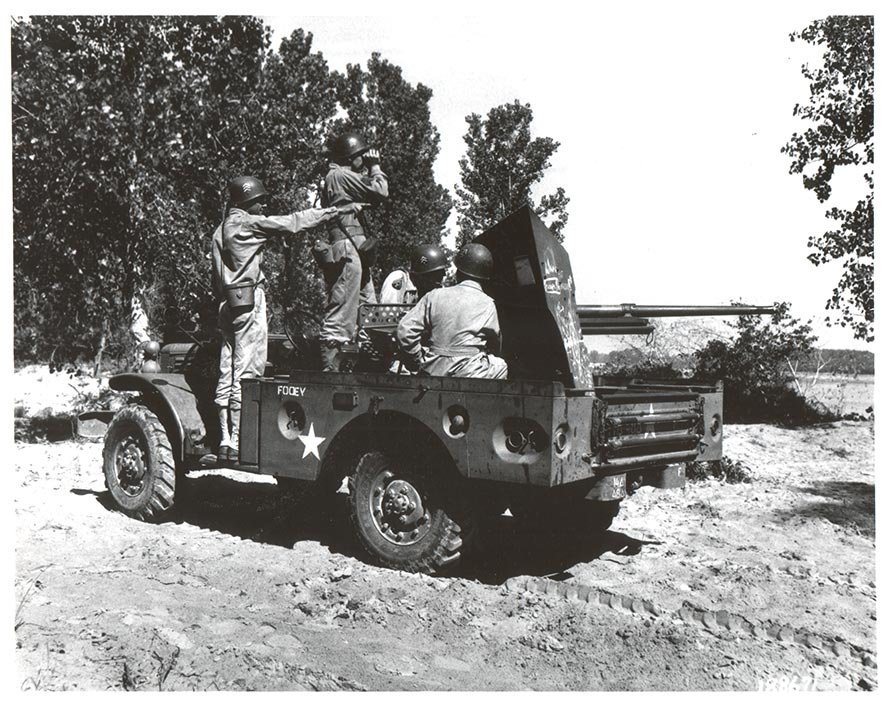
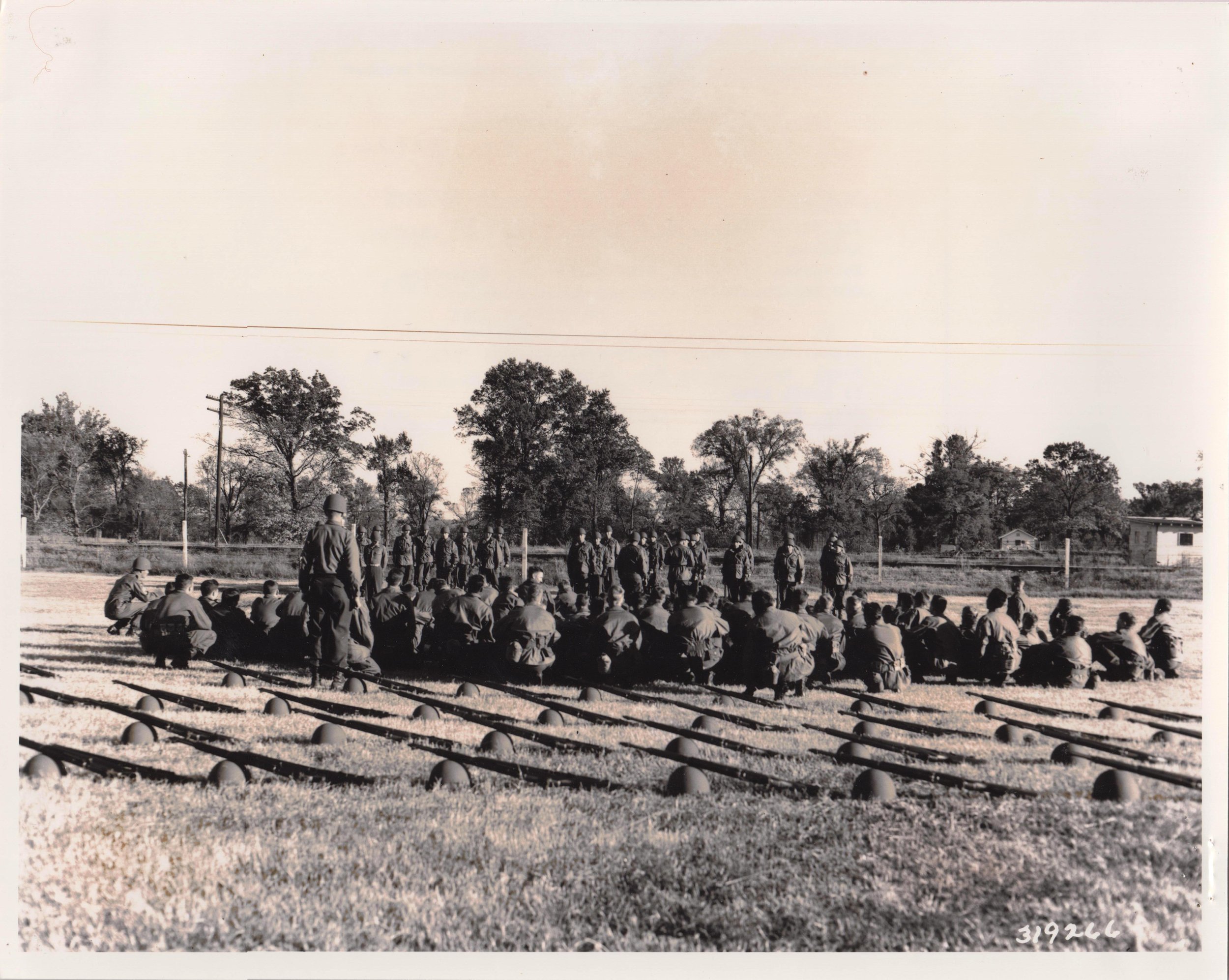
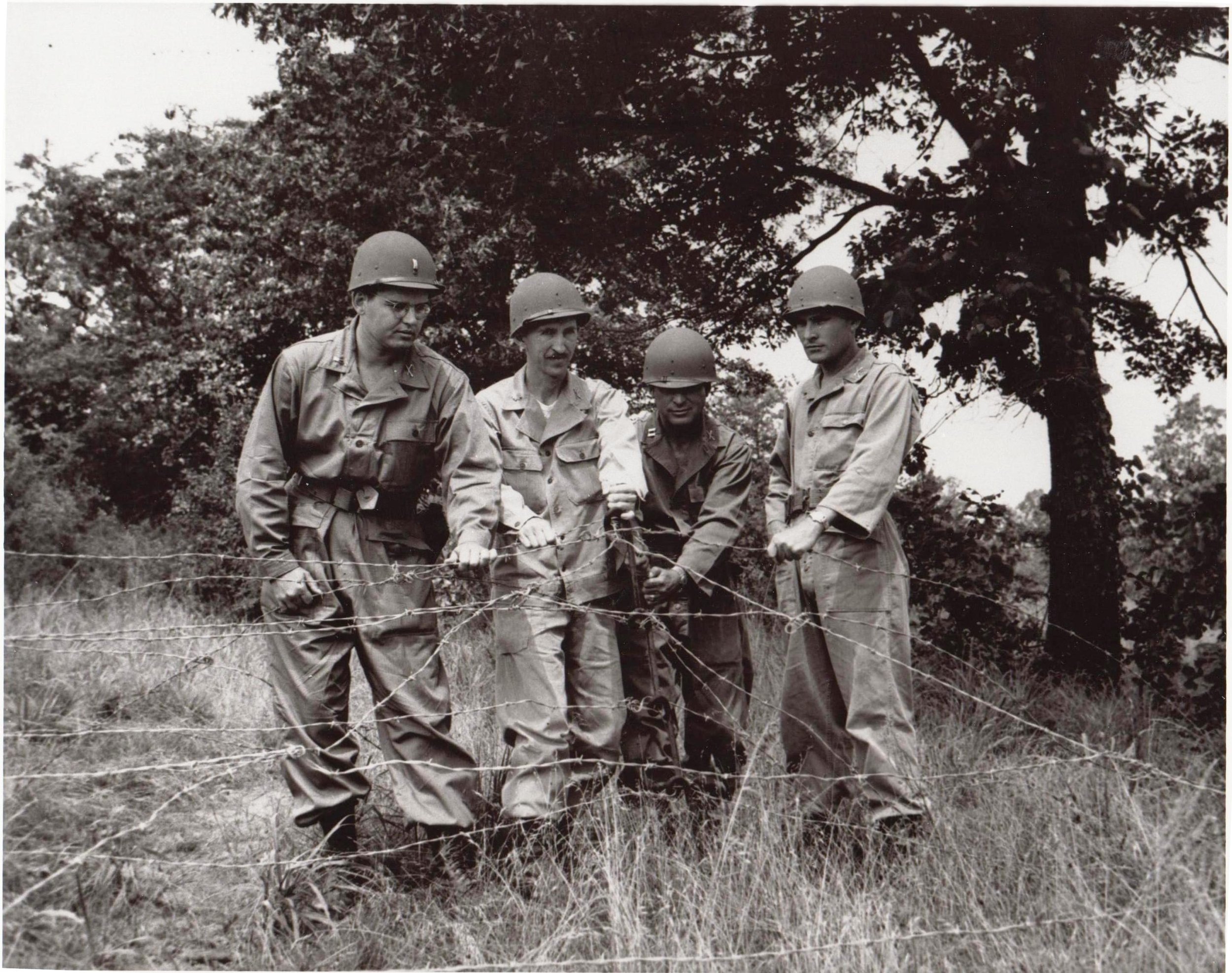


Camp Chaffee was established in September 1941 to meet the U.S. Army’s urgent need for firepower and armor. In September 1940 the U.S. Congress passed the Selective Service and Training Act (SSTA), bringing thousands of draftees into military service. Camp Chaffee was built as a major component in the Army’s training and readiness program.
From 1942-43 Camp Chaffee trained and equipped three armored divisions. The 6th Armored Division (AD), the 14th AD, and the 16th AD trained here. Each division deployed to Europe and saw combat across the continent.
Training at Camp Chaffee included live fire ranges for tanks, heavy artillery, mortars, grenades, and small arms. Soldiering skills such as land navigation, chemical warfare, first aid, radio procedures were taught in the classroom and in the field. Thousands of raw recruits passed through the barracks at Camp Chaffee. Here the army turned them into the war machine needed to defeat Nazi Germany.
Chaffee units fought in notable World War 2 battles such as the Battle of the Bulge, the Vosges Mountains, and the Liberation of Pilsen Czechoslovakia. The 6th and 14th are memorialized as liberators by the U.S. Holocaust Memorial Museum. The 16th AD is still celebrated to this day as “The Liberators of Pilsen,” in Pilsen Czech Republic’s annual Liberator Festival. Camp Chaffee also served as a German prisoner of war camp, housing 3,000 German prisoners.
After the war Camp Chaffee served as a training post. The 5th AD was stationed here from 1948 to 1957 to provide basic and advanced training to new recruits in peacetime and during the Korean War. In 1956, Camp Chaffee officially became Fort Chaffee in recognition of the permanent nature of the base.
Over the years Fort Chaffee has continued to serve as a bastion of American readiness and distinction.
In 1958 Elvis Presley was inducted into the army here. He received the most famous military haircut in the world in Building 803, which is now part of the Fort Chaffee Museum.
From 1956 to 1959 Chaffee was home to the U.S. Army Field Artillery Training Center.
During the Berlin Crisis the 100th Infantry Division was activated and stationed at Fort Chaffee. The division served as a training unit to provide basic and advanced training to new recruits.
Fort Chaffee was home the Joint Readiness Training Center (JRTC) from 1987 to 1993. The JRTC was a major training facility for the U.S. Army. It functioned as the opposing force for visiting Infantry and other ‘light’ units to train.
Fort Chaffee has served as a humanitarian housing center three times. In 1975-76 50,809 Vietnamese and Cambodian refugees processed through. They received medical care while steps were taken for their resettlement in the U.S.
In 1980, more than 25,000 Cuban refugees passed through Chaffee awaiting resettlement.
In 2005 several thousand victims of Hurricane Katrina and Rita found refuge at Fort Chaffee. Here they received disaster relief assistance, medical treatment, meals, housing, and showers.
In 1995 the Base Realignment and Closure Commission recommended the closure of Fort Chaffee. 7,192 acres were declared surplus and turned over to the local community. The remaining 66,000 acres were turned over to the Arkansas National Guard to use as a training site.
Today the Fort Chaffee Redevelopment Authority (FCRA) manages the acreage turned over to the community. The FCRA has overseen the development of mixed-use community projects that continue to this day.
Chaffee Crossing Veterans Memorial Plaza
Leave a lasting mark on the Chaffee Crossing Historic District with an engraved brick that will be an investment with historical significance.
The Chaffee Crossing Veterans Memorial Plaza within the historic district will preserve the memories of those impacted by Fort Chaffee since 1941. Now you can own a place in history that will become part of the plaza pathway.
8”x4” engraved brick with up to four lines of text $100
8”x8” engraved brick with up to seven lines of text $200
24”x24” paver with corporate logo-(please contact for more information)
History Lives On With Our Museums
Barbershop Museum 7313 Terry St. Bldg. #803, Fort Smith, AR Currently closed for remodeling. Admission is FREE!
Museum of Chaffee History 7313 Terry St. Bldg. #805, Fort Smith, AR Currently closed for remodeling. Admission is FREE!
Local Vietnam Veterans have helped create this tribute to those who served in the Vietnam War. Tours are available by appointment only. Call (479) 478-0110 for more information.


